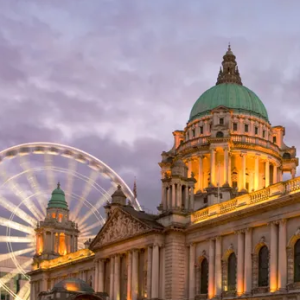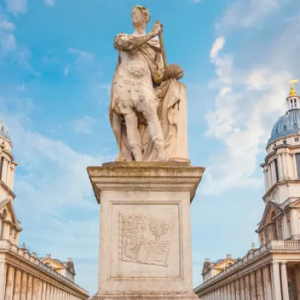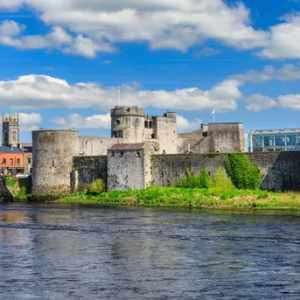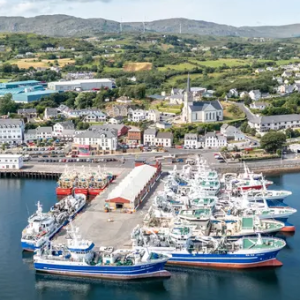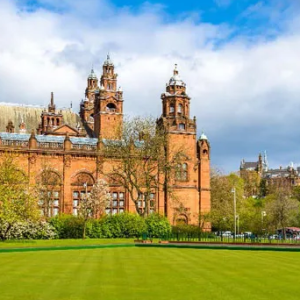British Isles & Ireland
Viking Cruises | 15 Days | London to Belfast
April - May & July - September 2027 Departures
Traverse the coast of the British Isles and the stunning shores of Cornwall and Scotland. Call at the historic Scottish ports of Greenock and Tobermory, and visit Fort William to behold the splendor of Ben Nevis. Discover Ireland’s rugged coastline and visit the ancient city of Limerick, with the iconic King John Castle on the banks of the River Shannon. Your voyage is bookended with overnight stays in London and Belfast, allowing you to explore more.
AAA Member Benefits and Special Offers:
- Member Benefits
- Up to $200 per person shipboard credit
Inclusions:
One complimentary shore excursion in every port of call
Free Wi-Fi (connection speed may vary)
All onboard meals, featuring regional specialties & always available classics
Beer, wine & soft drinks with onboard lunch & dinner
24-hour specialty coffees, teas & bottled water
Port taxes & fees
Ground transfers with Viking Air purchase
Visits to UNESCO Sites
Enrichment lectures & Destination Performances
Complimentary access to The Nordic Spa & Fitness Center.
Self-service launderettes
Alternative restaurant dining at no extra charge
24-hour room service
Day 1: London (Greenwich), England
Embark your ship and settle into your stateroom. Greenwich, a borough of London, is home to the Royal Observatory. From here, the world’s longitude is measured from the prime meridian, and Greenwich Mean Time sets the global time standard. At the port, the clipper shipCutty Sark, one of Greenwich’s renowned historic landmarks, is preserved as a fascinating museum. Upriver, London is home to Buckingham Palace, the Houses of Parliament and Westminster Abbey. In addition, this major economic and cultural hub boasts a long tradition of arts and architectural innovation—from Shakespeare’s Globe Theater to West End musicals.
Day 2: London (Greenwich), England
Greenwich is home to several iconic maritime institutions. Royal Naval College is a major symbol of Britain’s seafaring heritage and the architectural centerpiece of Greenwich. It opened as a hospital for sailors in 1712 and served as the Royal Navy’s educational institution from 1873 to 1998. Today, its hallowed halls whisper of the days when Britannia ruled the waves. The National Maritime Museum is the world’s largest, chronicling England’s seafaring endeavors in its compelling collection of art, maps and countless memorabilia, including the first marine chronometer.
Day 3: Dover, England
Most famously known for its dramatic white-chalk towering cliffs, Dover is the nearest city to France across the English Channel. Its strategic location as a doorway into England has earned it the moniker “Key to England.” As the port was under constant threat because of its location, the massive Dover Castle overlooking the channel grew over the centuries to become the nation’s largest edifice and remains so today. Dover also served as a bastion and command center during World War II.
Day 4: Portland, England
The Isle of Portland is linked to the British mainland by an 18-mile barrier beach on the southern coast of Dorset. This tiny island boasts an impressive past. Vikings first landed in England here in 789 AD. It is also home to one of the world’s largest manmade harbors, which hosted the Royal Navy until 1995. Portland stone, quarried on the island, was used to build London’s St. Paul’s Cathedral, Buckingham Palace and other architectural marvels. And it lies on England’s Jurassic Coast, a UNESCO World Heritage Site known for its unique coastal geology shaped over millennia.
Day 5: Fowey, England
Situated in an Area of Outstanding Natural Beauty at the mouth of the River Fowey, this quiet British harbor town dates back to the 7th century and maintains authentic charm. Narrow streets lined with medieval buildings wind past alleyways offering glimpses of the river beyond. Pastel-colored Victorian houses mingle with riverside pubs and cafés amid boutique shops selling handmade gifts. Famous for its tradition of Cornish Cream Tea and being one of the sunniest spots in the UK, Fowey is a hidden gem, and has been an inspiration to local artists for over 100 years.
Day 6: Cork (Cobh), Ireland
The town of Cobh is the gateway to Cork, Ireland’s second-largest city. Norse Vikings arrived in Cork around 915 AD and established a port here. During medieval times, a wall was erected around the city, portions of which still remain today. The nearby Blarney Castle, famous for the kissing stone that is said to bestow the “gift of gab,” was also built during this time. Today, Cork is a rich and vibrant cultural center where Irish cuisine has reached new creative heights and a breathtaking array of architecture, from neoclassical to Georgian, graces the cityscape.
Day 7: Limerick (Foynes), Ireland
On the Emerald Isle’s stunning west coast, the vibrant town of Foynes sits along an estuary of the picturesque River Shannon. Rich with maritime and aviation history, the world’s first transatlantic flights operated from here and between 1939 and 1945, it was the last port of call for seaplanes making transatlantic crossings, which led to it becoming one of the largest civilian airports in Europe during the Second World War. It added the famous whiskey drink, Irish Coffee, to its list of notables too, when it was first served to passengers on a stopover in 1942.
Day 8: Killybegs, Ireland
Killybegs is scenically set at the foot of a harbor full of boats and trawlers. Its most notable place in history is as the final port of call for La Girona, a ship of the Spanish Armada fighting in the war against England, before she was lost off the nearby Antrim coast. Beyond the massive hauls of fish brought in and imported daily, Killybegs is further renowned for the artful Donegal Carpets that were once woven here on the world’s largest carpet loom. These magnificent works—created in a Turkish hand-knotted style—were created for notable buildings the world over.
Day 9: Londonderry, Northern Ireland
Northern Ireland’s second-largest city has become a riverside hub for creative culture where sculptures and painted murals adorn buildings and squares, an up-and-coming food scene thrives and traditional music fills the streets from cozy pubs. History is ever present here, in ancient buildings and neo-Gothic architecture, award-winning museums and still-celebrated ancient festivals. The only completely walled city in Ireland, its 17th-century stone walls enclosing the historic city center invite exploration of their gates, watchtowers, battlements, and bastions.
Day 10: Lewis & Harris (Stornoway), Scotland
The Isle of Lewis is steeped in history and culture. Ancient standing stone circles and pristine beaches are juxtaposed with the island’s quaint town of Stornoway, a unique mix of cafés, inns and boutiques featuring the work of local artisans and craftspeople. Known in Old Norse as Stjórnavágr, meaning “steering bay,” Stornoway was founded by the Vikings in the early 9th century. In the summer months, you might spy locals cutting the peat; in the winter, the distinctive dry smell of peat fires drifts in the wind; and year-round, fishermen wrangle their catch in the picturesque bay.
Day 11: Tobermory, Scotland
On Scotland’s west coast, the Isle of Mull’s seaside capital sits on a sheltered bay beneath forested hills, where legend claims a Spanish Armada ship sank in 1588. What stands today is an 18th-century fishing port with a row of brightly colored buildings lining a harbor front dotted with fishing vessels. Here, local shops selling artisan foods and crafts intersperse with art galleries and cafes. Mull is one of the best wildlife watching destinations in the British Isles, making Tobermory a starting point for many expeditions to spot rare birds, mammals, and more.
Day 12: Fort William, Scotland
Surrounded by majestic mountains on the banks of Loch Linnhe, Fort William is the largest town in the Scottish Highlands and the gateway to Britain’s highest peak, Ben Nevis. Dotted with castle ruins, distilleries and stunning beaches amid some of Scotland’s most spectacular scenery, it is also the birthplace of the ancient Clan Cameron. Donald Cameron of Lochiel, the 19th chief of Clan Cameron played a central role in the Jacobite Uprising of 1745. His statue was erected here in 1905 and stands on the Parade.
Day 13: Glasgow (Greenock), Scotland
Historic Glasgow is a thriving center of arts, architecture and higher education. A university town since the 1451 founding of the University of Glasgow, it lays claim to Scotland’s first public museum, the Hunterian. Nearby, the Kelvingrove Art Gallery and Museum is equally admired by visitors for its spectacular architectural interiors and its internationally significant collections. Glasgow Green, the city’s oldest park, boasts the beautiful terra-cotta Doulton Fountain, while the glorious 13th-century Gothic Glasgow Cathedral is the city’s crowning medieval gem.
Day 14: Belfast, Northern Ireland
A major port heralded for its shipbuilding heritage, Belfast has undergone a cultural and architectural renaissance unrivaled in the rest of Europe. The influence of Britain is everywhere in this polished capital of Northern Ireland. Some of its most striking buildings exude Victorian flair and cosmopolitan elegance amid its famous Irish charm. Along the Golden Mile, high-end boutiques are reminiscent of those found in Paris, and the opulent Grand Opera House stands as a hub of Belfast culture.
Day 15: Belfast, Northern Ireland
Bid farewell to your fellow guests and journey home. Or spend more time exploring, perhaps joining one of our extensions.
All pricing and offers for accommodations and other non-air travel are per person, based on double occupancy, capacity controlled and subject to availability and change without notice. Pricing does not include taxes, fees, fuel surcharges, gratuities, resort fees, or airfare unless otherwise noted and is valid on new bookings only. Prices, fees, and other restrictions are subject to supplier policies. All offers, including but not limited to, bonus amenities, upgrades, prices, and group benefits are based on select dates, resorts, room categories, and/or fare codes. Specialty pricing may require proper identification. Cancellation penalties, blackout dates, and other restrictions may apply. When traveling outside the United States a valid passport is required. It is the sole responsibility of the passenger to have the proper documentation and identification required by the United States and other governments at the time of travel. When passports are required, it must be valid for a minimum of six months past your date of return. AAA strongly recommends the purchase of Travel Insurance. Usage of a credit card for travel arrangements may provide additional protection, please consult your credit card policies. Under certain circumstances the package price may be subject to supplemental price increases imposed by the supplier. Price increases include, but are not limited to fuel surcharges, taxes or fluctuations in foreign exchange markets that may be imposed after the date of purchase. Air-inclusive prices do not include government imposed taxes and fees, including but not limited to a September 11th Security Fee, U.S. or international government imposed taxes and fees, Federal Excise Fees, among others. Some carriers charge additional fees for checked bags, fuel surcharge, meals, etc. Please check the carriers website for details. Air-inclusive pricing is based on select departure cities. Prices from other cities may vary. AAA Oregon/Idaho acts solely as a sales agent for travel suppliers and is not responsible for the actions or inactions of such suppliers. We monitor all of the information presented on our website; however, we do not assume responsibility for any errors or omissions in the content of the offers displayed. Review full Travel Disclosure and Consent at time of booking.
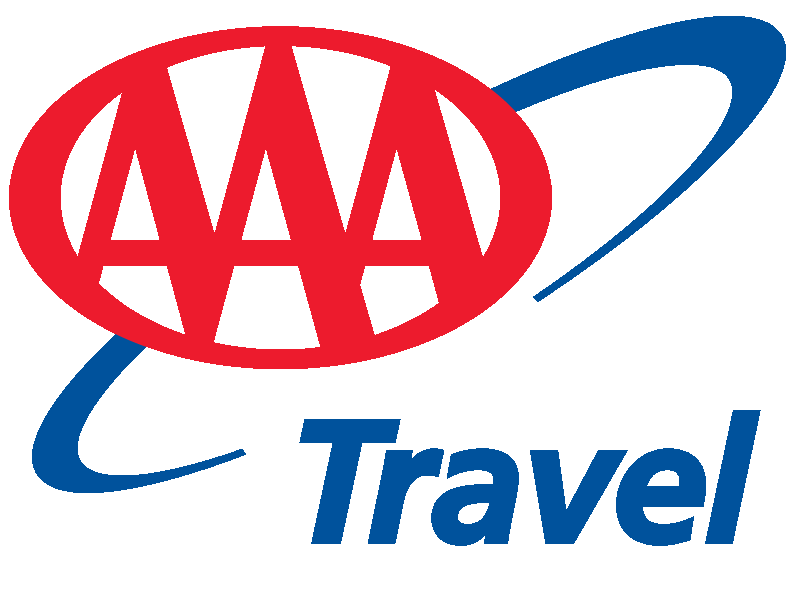 Click Here to View Your Vacation
Click Here to View Your Vacation

